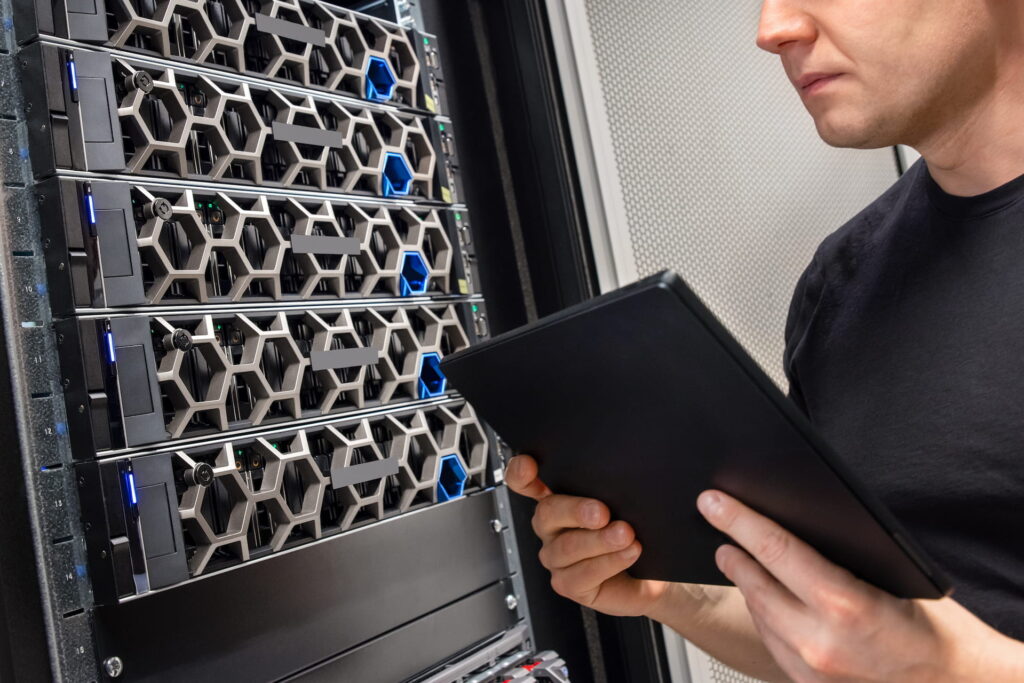Managing a company’s IT infrastructure is a complicated task. When administrators have to maintain separate machines for Web servers, databases, file storage, and network management, it starts to feel like wandering through a maze. Genisys Group can help you find a simpler approach through hyper-converged infrastructure (HCI).
Virtualizing everything
The basic idea of HCI is the use of commodity hardware throughout, with virtualization of all functions. Everything is virtualized. All the hardware is interchangeable. Not only the computing, but the storage and network functions are virtual units rather than separate boxes. An HCI cluster can define any number of servers and file systems, which aren’t restricted by hardware lines.
Expanding the network’s capacity is just a matter of adding more general-purpose modules. Dividing it into subnets is just as easy. The network’s architecture is all defined in software.
This approach saves money when building up the network. There’s no need to buy specialized systems for different purposes.
Scalability
With separate computing, networking, and storage components, scaling up is clumsy. You’re likely to end up with too much of one capability and not enough of another. When you add commodity components to a hyper-converged installation, you have more fine-grained control over scaling. You can add a machine which is heavy on processing power, one which has lots of storage capacity, or one which is strong on both. You just plug it in and add it to the cluster.
You can repurpose systems as necessary, just by changing the configuration. It’s a simple matter to add one or more virtual machines whenever they’re needed.
Fault tolerance
If you have a central database machine and it goes down, you’ve got a problem. There’s a big hole in your productivity till you get it fixed. Failover systems will avoid downtime in those situations, but they add to the cost. If one machine in an HCI cluster fails, you just pull it out to fix or replace. Its backed-up data moves to the systems which are still running. The infrastructure keeps working at reduced capacity.
Software-defined datacenters
HCI lets you run all your services from a single console. There’s no need for a separate SAN or NAS to manage data storage. You can set up an easily managed software-defined datacenter. The management task is much simpler than with an array of hardware appliances from different vendors.
Maintenance costs are lower. The money saved can go to increased capacity or to other parts of IT. The ease of expansion makes the datacenter more agile. New services can be added quickly. Read more about software-defined datacenters.
Opportunities for automation
Unifying and virtualizing all systems under a single point of management makes it easier for all the pieces to work together. Getting separate machines for each function to talk to each other takes extra work. HCI lets managers automate processes in ways that are clumsy or impossible with a hardware device for each service. This results in more efficient workflows and less need for manual intervention.
A private cloud
Hyper-converged architectures are a good fit for public or private clouds. A business can set up an HCI-based private cloud for services where it’s the best fit. There are several cases where private, on-premises clouds are better than public services:
- Policy or regulatory requirements mandate keeping the data on-premises for security reasons.
- Low latency is necessary, so the hardware needs to be close by.
- Frequent changes require a hands-on approach.
Widely used cloud platforms are compatible with HCI and are easy to set up.
Finding the best solution
Each business’s needs are different. Is a hyper-converged infrastructure the best solution to your IT problems? Is a public cloud or a dedicated server a better approach in your case? Whatever your requirements, Genisys Group will help you to find the best hardware and software to make your business run efficiently.
